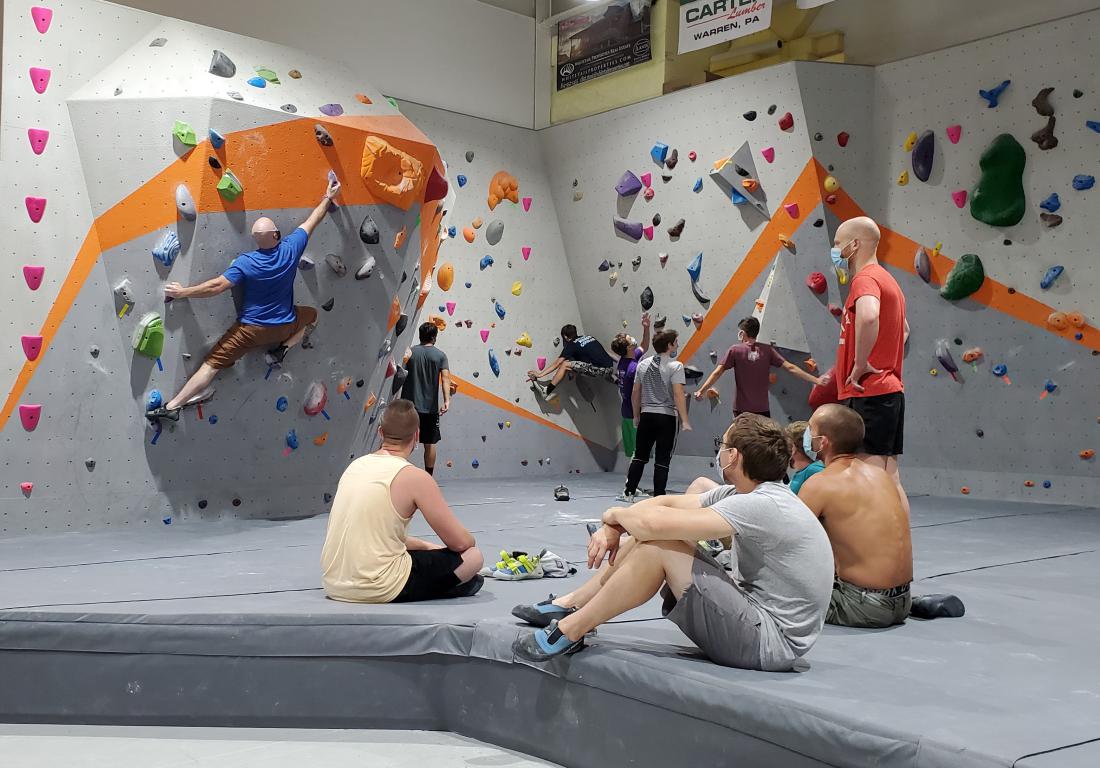
Sociology of the Cliff: How Climbing Gyms Reshape Urban Relationships
Share
Climbing gyms have evolved far beyond their humble beginnings as places for climbers to train or practice for outdoor ascents. In recent years, they have transformed into dynamic social hubs where people of all backgrounds come together to share experiences, push physical limits, and forge lasting connections. The appeal of climbing goes beyond the simple thrill of scaling walls; it’s the intricate web of social dynamics and human behavior that shapes the unique atmosphere of these spaces. The "social physics" of climbing gyms is an intricate dance of interactions, motivations, and relationships that go far beyond the plastic holds and chalk-covered hands.
The Social Magnetism of Climbing Gyms
When you step into a climbing gym, the first thing you might notice is the energy in the air—climbers eagerly discussing their next moves, spotting each other, and cheering each other on. There is a sense of camaraderie that thrives in these spaces, often making them feel less like fitness facilities and more like community centers. Climbing gyms attract a wide range of individuals, from seasoned climbers to beginners, and this diversity creates an inclusive atmosphere where everyone is encouraged to take part.
The gym functions as a "social magnet," drawing people in not just for physical exercise, but for the sense of belonging it offers. It’s common to see people bonding over shared experiences, from the collective challenge of working through a difficult route to the communal feeling of accomplishment when someone finishes a particularly tough problem. These shared moments foster a sense of trust and mutual respect, which is key to the social fabric of climbing gyms.
The Role of Climbing as a Social Connector
One of the most fascinating aspects of climbing gyms is the way they encourage social interaction among strangers. Unlike many other fitness activities, climbing is inherently collaborative. Climbers rely on each other for belaying, spotting, and encouragement. This level of interdependence fosters an environment where social interaction is not only encouraged but essential.
Even for those who might normally shy away from group activities, climbing offers a built-in mechanism for connection. The act of spotting someone or offering advice on a challenging move creates opportunities for social bonding, making it easier to strike up conversations and build friendships. This sense of connection is particularly important in an increasingly digital world, where face-to-face interactions are becoming less frequent.
Moreover, climbing gyms often host social events and group sessions to further build a sense of community. From beginner classes to social nights, these events provide opportunities for climbers to engage outside of their usual training routines, fostering a deeper sense of connection among participants.
Climbing as a Microcosm of Social Dynamics
Climbing gyms offer a unique lens through which we can examine social dynamics. The way climbers interact—whether through cooperation, competition, or mentorship—reflects broader social patterns and behaviors. For instance, beginners often rely on more experienced climbers for guidance, while more advanced climbers may seek to challenge themselves by competing against others or setting new benchmarks. These dynamics mirror real-world social structures, where knowledge, skill, and experience are valued and exchanged in different ways.
At the same time, the inclusive nature of climbing gyms also challenges traditional social barriers. Age, gender, and background often take a backseat in these spaces as individuals come together to share a common goal. In fact, climbing gyms have been recognized for their ability to create safe, inclusive environments where individuals from all walks of life feel empowered to participate.
The Psychological Pull of Climbing Gyms
Climbing gyms are not just physical spaces; they are psychological landscapes where climbers can push themselves both physically and mentally. The challenge of problem-solving—figuring out how to navigate a tricky boulder problem or route—triggers a range of psychological responses, from frustration to triumph. These emotional highs and lows are often experienced in groups, with climbers offering encouragement or sympathy depending on the outcome.
This psychological aspect of climbing also plays into the social fabric of the gym. The process of overcoming challenges—both physical and mental—becomes a shared experience that deepens the sense of connection among climbers. As individuals help each other problem-solve, they also foster a sense of collective achievement. This creates a supportive environment where climbers feel motivated to continue pushing their boundaries.
The Future of Social Physics in Climbing Gyms
As climbing gyms continue to grow in popularity, their role as social spaces will only become more pronounced. With the rise of indoor climbing as a competitive sport, particularly after its inclusion in the 2020 Olympics, climbing gyms are poised to attract an even broader audience. As this happens, the social dynamics will likely become even more complex, with an increasing variety of people using climbing gyms for different reasons.
Some may come for the social scene, others for the competition, and still others for the pure love of climbing. However, what unites all these individuals is the magnetic pull of climbing gyms as places not just for physical growth, but for social and psychological development as well.
In the years to come, we will likely see climbing gyms continue to push the boundaries of what it means to be a social space. From innovations in technology that enhance group training to events that promote inclusivity and diversity, climbing gyms will remain at the cutting edge of the "social physics" movement—offering not just a place to climb, but a place to connect, grow, and belong.
In the end, climbing gyms are about more than just plastic holds and chalk dust. They are about the connections we form, the challenges we face together, and the sense of community that makes climbing one of the most socially dynamic sports in the world.
